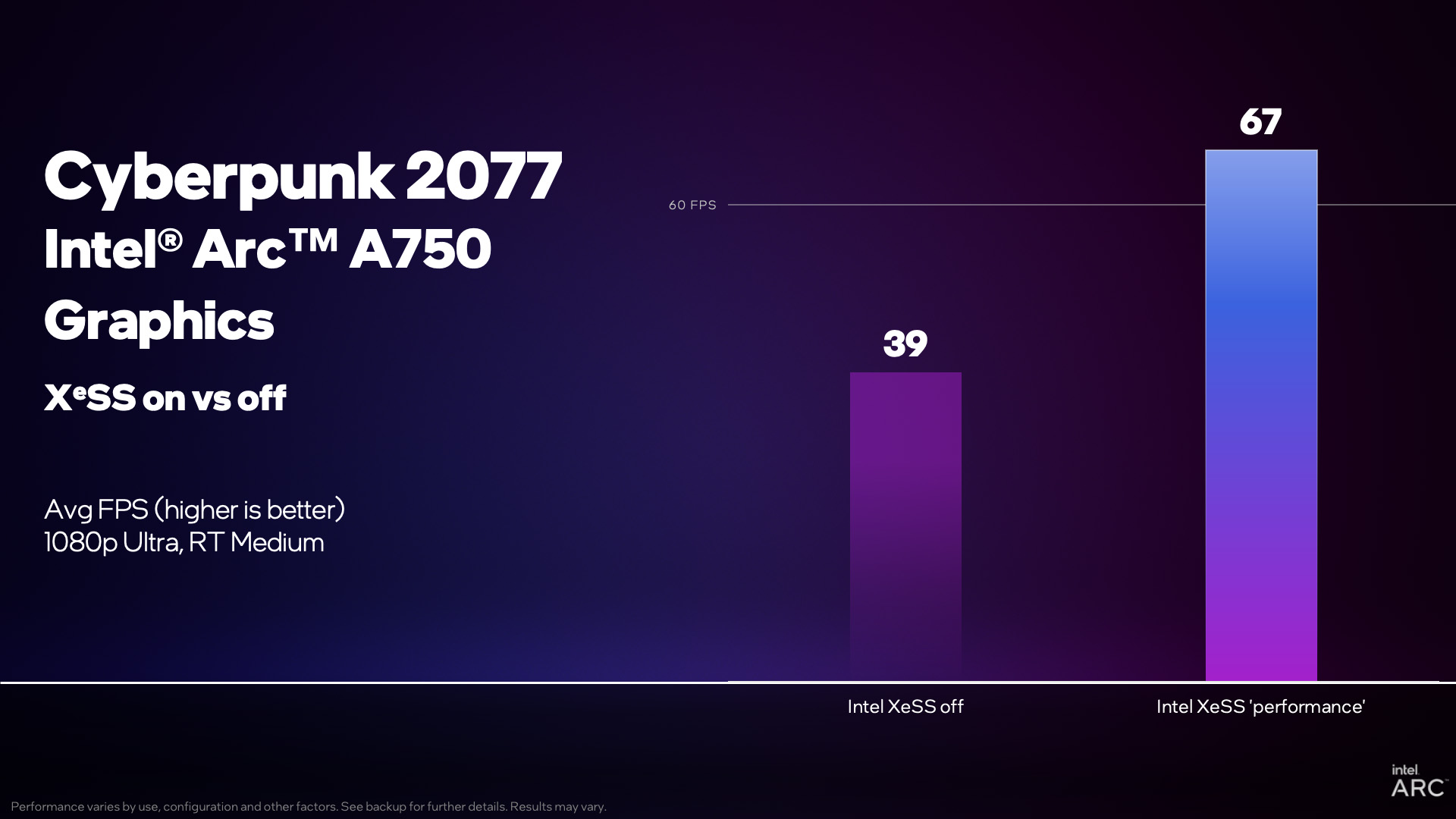Intel Arc GPU performance bumped by over 70% in Cyberpunk 2077 thanks to XeSS
The more frames the merrier, but note these are scaled frames versus native frames.

Intel and CDPR heard you like Cyberpunk 2077. So they just boosted performance on its Arc graphics cards in the game by over 70% courtesy of a new patch supporting Intel's XeSS scaling tech. Nice.
More specifically, Intel is claiming that the latest Cyberpunk patch lifts performance from 39 fps to 67 fps on the Intel Arc A750 card running at 1080p, ultra detail and medium ray tracing enabled.
Of course, what we're comparing here is performance with and without XeSS scaling. The 39 fps is running 1080p native. The 67 fps is courtesy of XeSS scaling.
Prior to this patch, you could have opted to run AMD's FSR scaling on an Intel Arc card. However, XeSS has two modes, one of which leans on the AI cores in Arc GPUs to accelerate the scaling.
That mode generally has better performance than AMD's FSR scaling which relies on generic instructions and can run on any modern GPU and it's what we are assuming has been used to implement XeSS support on Cyberpunk.
It's also worth noting that XeSS was set to performance mode to achieve 67 fps. That's the most aggressive mode and doesn't bode all that well for image quality.

XeSS at 1080p in performance mode renders the game at a resolution of 960 by 540 pixels and then scales it up to 1920 by 1080. By comparison, in quality mode the image is scaled up from 1280 by 720 pixels.
Keep up to date with the most important stories and the best deals, as picked by the PC Gamer team.
Generally, scaling techs like XeSS and indeed AMD's FSR and Nvidia's DLSS work better at higher target resolutions like 4K. So, running XeSS in performance mode isn't going to give you a true 1080p experience.
All that said, it's still welcome to see Intel's Arc GPUs getting this kind of love. The joys of XeSS will of course also apply to the Intel Arc A770 board, too.
Intel has a ways to go to be really competitive in the unforgiving PC graphics. But every little refinement like this gets it one step closer to being able to take on AMD and Nvidia on an equal footing.
That will matter most when Intel unleashes its second-gen Arc GPUs, codenamed Battlemage, some time next year. If Intel's first Arc GPUs were a bit of an experiment for which excuses had to be made, Battlemage will need to really deliver. Getting details sorted out like XeSS support in big name games like Cyberpunk is all part of this process.
Best CPU for gaming: Top chips from Intel and AMD
Best gaming motherboard: The right boards
Best graphics card: Your perfect pixel-pusher awaits Best SSD for gaming: Get into the game first

Jeremy has been writing about technology and PCs since the 90nm Netburst era (Google it!) and enjoys nothing more than a serious dissertation on the finer points of monitor input lag and overshoot followed by a forensic examination of advanced lithography. Or maybe he just likes machines that go “ping!” He also has a thing for tennis and cars.


